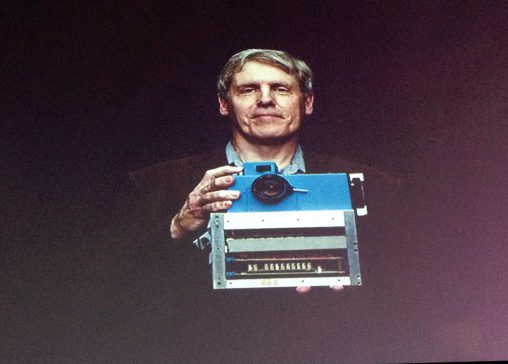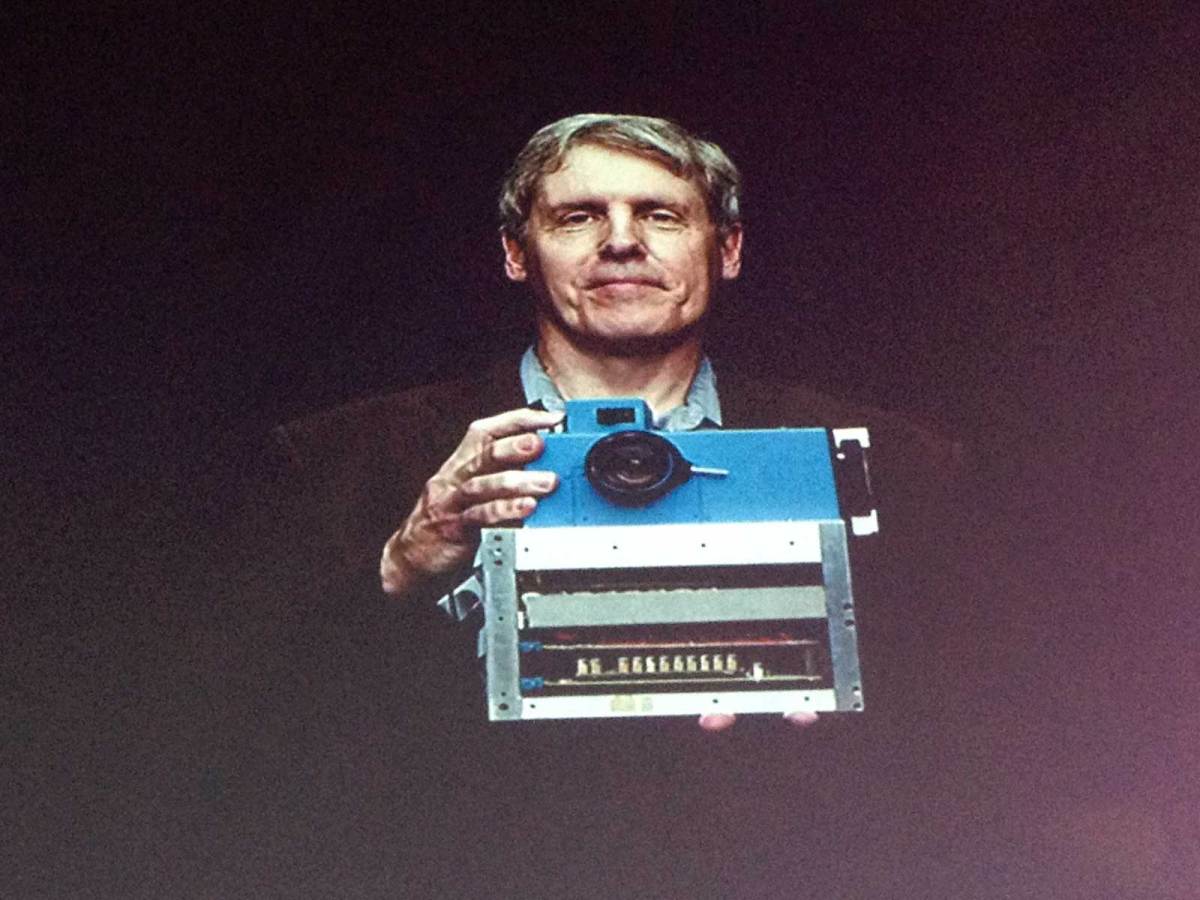Is your business facing its own ‘Kodak moment’? If so, how could ‘design thinking’ turn it around?
That was the essence of presentation by Sven Baker, chairman and group CEO of New Zealand company Designworks, delivered at the 2014 Design as Strategy Forum, held in conjunction with the Vivid Festival.
Baker is an advocate for utilising ‘design thinking’ to turn around business fortunes, using design not as an aesthetically-pleasing add-on to marketing and communications, but rather as a strategic business tool.
Organisations that embed designers in their business operations financially outperform those who don’t, Baker said. To illustrate his point he showed the audience this picture:

The world’s first digital camera was built in the 1970s by Steve Sasson, an engineer at Eastman Kodak. According the Sasson, when he showed his filmless model, pictured above, to the management at Kodak they said ‘that’s cute — but don’t tell anyone about it’.
Baker said this unwillingness to accept new technology led to Kodak’s ultimate decline. It chose to protect its legacy rather than embrace the new.
Click here to sign up for our free daily newsletter
Design-thinking is about solving underlying problems. When Baker works with businesses he asks, “What problem are we trying to solve? And what’s the biggest problem that we can solve first?”
Baker said that a decade ago Air New Zealand was facing its own ‘Kodak moment’ after the collapse of Ansett Australia but has managed to turn its fortunes around, partly thanks to its campaign which focused on adding value to economy class, solving the problem of the uncomfortable and cramped long haul flight
Air New Zealand’s Skycouch — a row of three economy seats that can be positioned to lay flat — has turned ‘cattle class’ into ‘cuddle class.’ Baker said Air New Zealand will make more money from the selling the seat design to other airlines that it will in economy class ticket sales.
Baker said that support from consecutive New Zealand governments has helped change the way businesses see design, and has encouraged them to start to embed that capability within the business.
Further, the absence of natural resources to be dug up and exported has also forced New Zealand businesses into creating niche products and services which they can charge a premium for.
“We have come to understand that our future prosperity as a nation, as a very small nation, at the very edge of the world, our future prosperity demands that we focus our energies on turning that natural advantage that we have into higher value products and services that we can offer the world.
“It’s meant tapping into the emerging category trends and consumer demand and focusing on developing narrow, niche products that we can demand a premium for,” Baker said.
Vivid Sydney continues through 9 June 2014.

